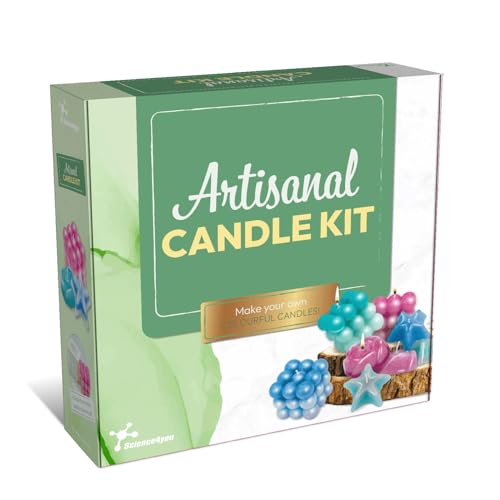This post may contain affiliate links which means we may receive a commission at no cost to you, if you make a purchase through a link. Please see our full disclosure for further information.
Making candles, wax melts, or tarts starts with one critical decision: choosing the right wax. With so many options—soy, paraffin, blends, and more—it’s easy to feel overwhelmed. But fear not: this guide breaks down everything you need to know to pick the perfect wax for your project, from container candles to decorative tarts.
Container Wax vs. Pillar Wax: What’s the Difference?
First, let’s clarify the two main categories of candle wax, as they’re designed for distinct purposes:
Container wax is formulated to adhere to jars, tins, or glass vessels as it cools. It’s typically softer with a lower melt point (around 120–135°F for soy-based varieties), which helps it “hug” the container and prevent tunneling (when wax burns down the center, leaving unused wax on the sides). This type of wax is ideal for candles that live in a container from start to finish.
Pillar wax, on the other hand, is firmer and has a higher melt point (130–160°F), allowing it to hold its shape without a container. It’s designed to form a “shell” as it burns—melted wax stays contained within the outer layer of unmelted wax, making it perfect for free-standing pillars, sculpted candles, or wax melts that need to pop out of molds easily. It also releases cleanly from plastic or silicone molds, which is why it’s a favorite for clamshells and tarts.
Types of Candle Wax: Pros, Cons & Best Uses
1. Soy Wax
Derived from soybean oil, soy wax has surged in popularity among DIYers and eco-conscious makers. Here’s why:
- Pros: Burns longer than paraffin (up to 50% longer in some cases), produces less soot, and is renewable (a plus for sustainable brands). It has a creamy, opaque finish with a soft matte look, and its natural composition makes it easy to work with for beginners. Soy wax also has a strong “cold throw”—the scent it emits when unlit—so it’s great for candles displayed in rooms where they’re not always burning.
- Cons: It’s prone to “frosting”—a white, crystalline layer that forms on the surface as the wax cools. While harmless (it’s a sign of pure soy), some makers find it unappealing. It also has a lower fragrance load (typically 6–8% max) compared to paraffin, so very strong scents may need a boost.
- Best for: Container candles, eco-friendly lines, and projects where slow, clean burning is a priority.
2. Paraffin Wax
A byproduct of petroleum refining, paraffin has been the industry standard for decades—and for good reason:
- Pros: Delivers an unbeatable “hot throw”—the scent intensity when lit—making it ideal for strongly scented candles. It cools to a smooth, glossy finish with minimal texture, so dyes show up vividly (great for bold, colorful candles). It’s also affordable and widely available, with a higher fragrance load (up to 10–12%) than soy.
- Cons: Burns faster than soy and can produce more soot if not paired with the right wick. It’s not renewable, which may turn off eco-focused consumers. Paraffin also shrinks slightly as it cools, often leaving a small “divot” around the wick—a fixable issue with a second pour of melted wax.
- Best for: Store-bought candles, strongly scented melts, and projects where a smooth, professional finish is key.
3. Blended Waxes
Why choose one wax when you can mix two? Blended waxes (often soy + paraffin, or soy + beeswax) combine the best traits of their components:
- Soy-Paraffin Blends: These are the most popular. A 70% soy + 30% paraffin mix, for example, reduces frosting from soy while boosting hot throw and fragrance load. It’s a happy medium for makers who want the eco-cred of soy with the performance of paraffin.
- Soy-Beeswax Blends: Beeswax adds firmness and a subtle honey scent, making the wax harder (great for pillars) and slower-burning. It also gives a natural golden hue.
- Pro Tip: Always test blends with new wicks—different wax densities can affect how well the wick burns. Start with small batches (1–2 pounds) to tweak ratios.
How to Choose the Right Wax for Your Project
Container Candles
Prioritize wax that bonds well to glass or metal. Look for:
- Melt point: 120–135°F (low enough to pour safely, high enough to avoid melting in warm rooms).
- Fragrance load: 6–10% (depending on wax type) to ensure the scent lingers.
- Appearance: Soy for a creamy look, paraffin for glossy, or blends for the best of both.
Pillar Candles & Sculpted Candles
Opt for firm, high-melt-point wax (130–160°F) that holds shape. Check:
- Mold release: Pillar wax or soy-beeswax blends release cleanly from molds.
- Burn stability: The wax should form a sturdy outer shell to contain melted wax (avoid soft soy here).
Wax Melts, Clamshells & Snap Bars
Scent is king here—choose wax with a high fragrance load (8–12%). Pillar wax is ideal because it’s firm enough to pop out of plastic clamshells without crumbling. Some makers use container wax, but note: it may be softer and break easily, though many consumers don’t mind if the scent is strong.
Tarts & Decorative Embeds
For tarts that double as decor, pick wax that resists frosting (paraffin or paraffin-heavy blends work best). If they’re for scent, prioritize hot throw—paraffin or blends shine here.
Troubleshooting Common Wax Issues
- Frosting on soy wax: Minimize it by cooling the wax slowly (avoid refrigeration) and pouring at a consistent temperature (around 125–130°F).
- Shrinkage in paraffin: Do a “second pour” 10–15 minutes after the first layer cools to fill in wick divots.
- Poor scent throw: Ensure you’re using the right fragrance load for your wax (check the manufacturer’s guidelines) and mix scents thoroughly when adding to melted wax.
Conclusion
Choosing the right wax boils down to your project’s needs: eco-friendliness, scent strength, appearance, or mold release. Whether you opt for soy, paraffin, or a custom blend, testing small batches first will help you refine your process.
Ready to start? Explore trusted suppliers like CandleScience for high-quality waxes, wicks, and scents to bring your candle-making vision to life.
Online Fragrance Calculator – Total Content Method
Free Candle Fragrance Load Calculator
How to Use a White Angel Prayer Candle
Uncover further inspiration in our blog.















